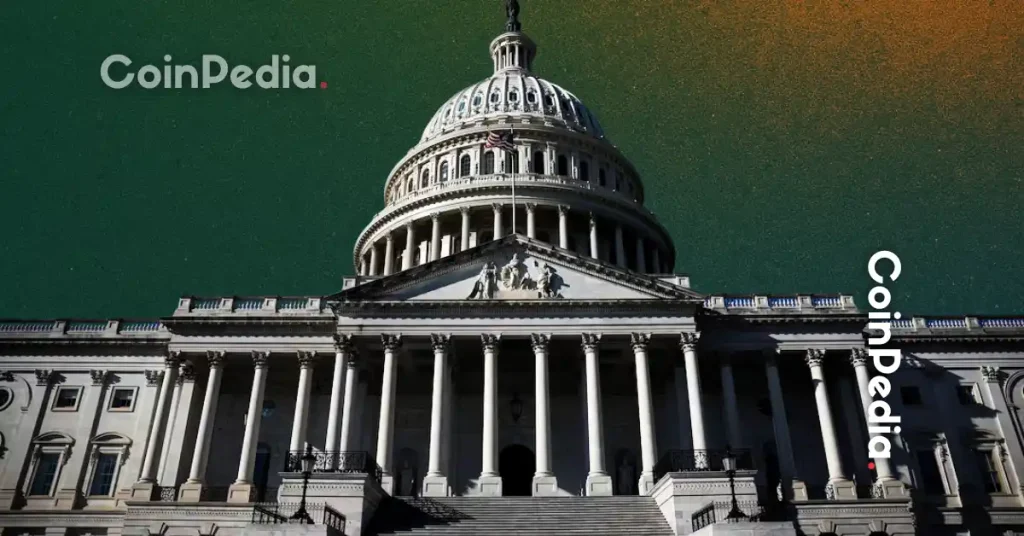
The latest version of the stablecoin bill
The U.S. House Financial Services Committee released the third revised version of the bipartisan stablecoin draft drafted by Rep. Patrick McHenry and others on the 8th. The bill is scheduled to be heard in the House of Representatives on the 13th.
The bill includes adjustments to reconcile the positions of Republicans and Democrats, and responds to additional comments from Republican lawmakers, the commission said.
In this version, the U.S. Federal Reserve was named as the primary regulator that sets the issuance requirements for stablecoins. It also remains unchanged from the previous draft to allow state regulators to oversee companies that issue tokens.
The Federal Reserve was given powers, among other things, to intervene against issuers of state-regulated stablecoins in times of emergency. States can also transfer their oversight duties to federal oversight agencies.
If the debate progresses and both the Senate and the House pass, it will be the first comprehensive bill on stablecoins in the United States.
What is a stablecoin
A cryptocurrency whose price is always stable. Stablecoins are a type of cryptocurrency, and unlike volatile assets such as BTC, ETH, and XRP, the purpose is to maintain its value ($1) backed by the US dollar. In addition to US dollar-backed stablecoins (USDT/USDC), there are also stablecoins that use algorithms.
 Cryptocurrency Glossary
Cryptocurrency Glossary
Draft content
The draft includes definitions of stablecoin issuers for payments, provisions regarding requests from users to exchange stablecoins, and license application procedures for stablecoin issuers.
Public hearings were also held on the bill in April.
At that time, the bipartisan consensus was that stablecoins are likely to fall outside the controversy over the definition of “securities or commodities,” and that they have the potential to evolve the U.S. payment system. It is a matter of nature.
Regarding private crypto assets (virtual currencies), the U.S. Securities and Exchange Commission (SEC) has sued Coinbase and Binance for “providing unregistered securities”, arguing that most cryptocurrencies are “securities.” Situation.
connection: Chairman Gensler Claims “SEC Has Already Provided Regulatory Guidelines”
The proposal dropped a provision to advance research on the benefits of a digital dollar, a central bank digital currency (CBDC).
In the past, some Republican lawmakers have voiced opposition to CBDCs, saying they could be a tool for the federal government to monitor the financial activities of American citizens.
connection: US senator submits anti-CBDC bill for individuals
What are CBDCs
A digital currency issued by the central bank of a country or region. It stands for “Central Bank Digital Currency”. The big difference from virtual currency is that CBDC is a legal tender. While cost reduction and efficiency improvement can be expected in currency management and settlement, there are many issues to be considered, such as protection of personal information and privacy, security measures, and impact on the financial system.
 Cryptocurrency Glossary
Cryptocurrency Glossary
Public hearing on 13th
In addition to the stablecoin draft, the public hearing on the 13th will also include a separate bill that Congressman McHenry is pushing to clarify cryptocurrency regulations.
Jeremy Allaire, CEO of Circle, Inc., Emin Gunn Schiller, CEO of Ava Labs, a startup company developing Avalanche (AVAX), Thomas Sexton, CEO of the National Futures Association, and Coy Garrison, Partner of Steptoe & Johnson Law Firm, also testified. I plan to.
connection: U.S. Congressmen announce bill to clarify cryptocurrency regulations
The post Latest version of US bipartisan stablecoin draft released appeared first on Our Bitcoin News.

 2 years ago
170
2 years ago
170














 English (US) ·
English (US) ·